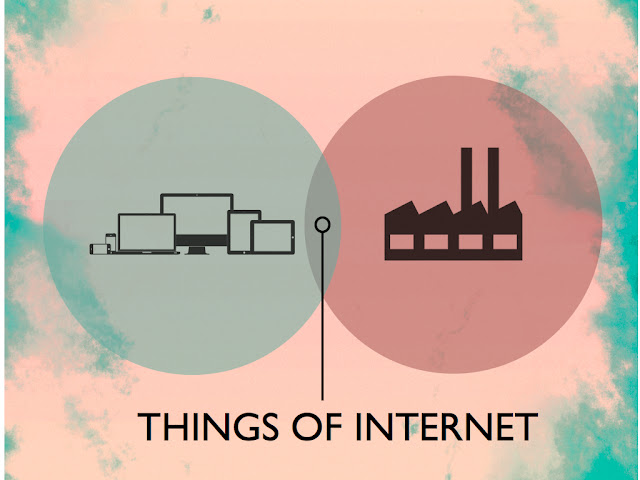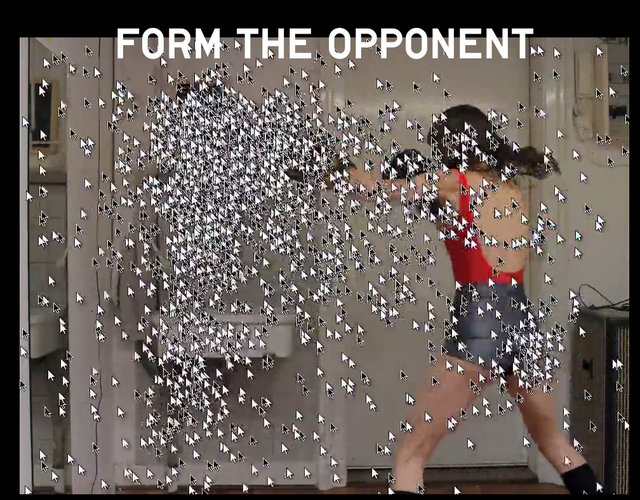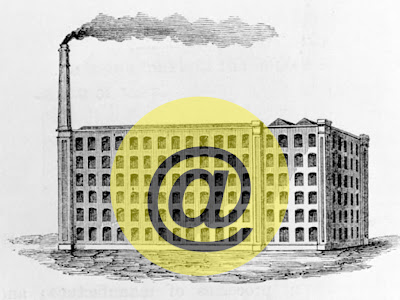
For a very, very long time, there have been Things. Meat. Wood. Cows. Stones. More recently, there has also been the Internet. And more recently still, people have been talking about how Things can and are being hooked up to the Internet to create an Internet of Things. Fridges that talk to your shopping basket, clothes that talk to your phone. This Internet of Things will transform our world. But there is another revolution taking place. For just as technology is enabling existing Things to become intelligent and communicate with the Internet, we are also finding ways to combine the Internet with manufacturing to create entirely new, previously impossible Things: the Things of Internet.
In the past, if you wanted to make something, anything, there are four 'Impossibilities' that could get in your way - all of which are now made possible by the Internet.
1) The Impossibility of Perfect Creativity
2) The Impossibility of Perfect Foresight
3) The Impossibility of Sufficient Funding
4) The Impossibility of Scale
The impossibility of Perfect Creativity
User Generated Content - online content created by users acting alone or in collaboration, has been around for as long as the web. YouTube, with its 72 hours of video uploaded per minute, is just one example. And it has disrupted the music, film and publishing industries that used to own the process of creating content from end to end, by separating the creation of content from its distribution.
 |
| Crowdsourced video Do Not Touch |
More recently, in a new music video, 'Do Not Touch', viewers are told where to move their mouse pointer at various stages in the video, and their movements are aggregated with those of other users to create a 'swarm' of mouse pointers that itself forms part of the video for others to watch.
Arguably, this kind of content is part of the Things of Internet. But in the last few years, companies have sprung up that deliver something else entirely: User Generated Objects - real world things created via the internet.
 Threadless was one early example: a site where T-shirts are created by bringing together designers to create the concept, the wisdom of the crowd to evaluate it and the company's resources to fabricate and distribute it. Then, four years ago, Quirky launched to bring the wisdom of the crowd to the manufacture of just about anything.
Threadless was one early example: a site where T-shirts are created by bringing together designers to create the concept, the wisdom of the crowd to evaluate it and the company's resources to fabricate and distribute it. Then, four years ago, Quirky launched to bring the wisdom of the crowd to the manufacture of just about anything.Where Threadless had disrupted the process by separating design from evaluation from manufacturing and distribution, Quirky took things one step further by separating out the entire creative process into as small steps as possible - a production line for ideas. Users on Quirky can suggest a product concept, name, tagline, design, or all of these. Each step is voted on by users.
The end result is objects that could not have been created before, because the whole is greater than the sum of the parts. Quirky uses crowdsourcing to combine the best designer, best writer, best engineer, best marketer, wherever they are in the world, and brings them together on the fly to create a product.
It turns out though, that even Quirky's model could be broken down further. For while Quirky had invented a whole new process for the 'ideas' side of creating something, it was still also handling the manfucturing and distribution. Step in GE. In a recent announcement, one of the world's largest companies, is now partnering with Quirky, bringing its expertise in manufacturing to Quirky's expertise in idea development. This move is a sign of the recognition by GE that user generated manufacturing is going to be big business in the years to come.
While Threadless and Quirky use the internet to crowdsource creativity from humans consciously coming up with ideas, it is also possible to harness the unconscious creativity of humans by using algorithms. Researchers at the Copenhagen Institute of Interaction have created a working prototype that makes smoothies based on mentions of fruit on Twitter. Each smoothie has a unique blend of flavours based on the exact proportion of tweets about different fruits at the time it is made. To drink one of these smoothies is to drink a drink made by the unconscious hands of millions.
The Impossibility of Perfect Foresight
GE is not just buying into Quirky's production line for the creative collaboration process, though, it is also buying into Quirky's ability to harness the power of crowds to predict which products are going to be successful.
 Product managers in manufacturing companies, and buyers in retailers, have a difficult job. Their role is to predict, months or even years in advance, what the customer demand for a particular item will be. Their decision will put in train the development and manufacture of a product, the success of which will only become apparent when it hits the stores and the sales start coming in. Even with the best historic and trend data, this is still about the science of guessing what will sell. This creates a bias in favour of safe bets, and means that some product ideas will never come to fruition.
Product managers in manufacturing companies, and buyers in retailers, have a difficult job. Their role is to predict, months or even years in advance, what the customer demand for a particular item will be. Their decision will put in train the development and manufacture of a product, the success of which will only become apparent when it hits the stores and the sales start coming in. Even with the best historic and trend data, this is still about the science of guessing what will sell. This creates a bias in favour of safe bets, and means that some product ideas will never come to fruition.But sites like Quirky and Threadless, and also Kickstarter (about which more in a moment), ask consumers which product they would buy before it is even made. Only the most popular products as voted by consumers make it into production, which means there is a greater likelihood that they will sell - as well as a ready made audience who have already expressed an interest in the product. This greatly enhances the accuracy of predicting what will sell as it is based on the actual stated interest of thousands of people.
Quirky and Kickstarter take this a step further by making it possible to pre-commit to buying a product (in the case of Kickstarter, by making a small investment in a company in exchange for a product). These 'pre-sumers' are essentially funding the product manufacture before it even takes place. This massively reduces the guesswork involved in developing new products and means that more unusual or risky products are on a level playing field with traditionally 'safer' bets. The result? More Things that would never have existed without the Internet.
The Impossibility of Sufficient Funding
Until relatively recently, if you wanted to create and sell anything on any worthwhile scale you needed a company, and, usually, a way of funding it. And that meant banks, VCs or friends and family - a huge barrier to entry. Web-based funding sites such as Kickstarter now remove this barrier by allowing the whole world to invest in your idea, in small increments. So things that would never have got past the funding stage can now be made, thanks to the internet.
The Impossibility of Scale
Historically, to manufacture something, you would need to make it in sufficient quantities to pay for the tooling, the set up, the manufacturing run. This was obviously a barrier to individuals wanting to create something very customised, as they would not be able to achieve sufficiently large scale to produce niche items, even if they had the ideas, prediction and investment thanks to the internet to produce more popular ones.
But it was a barrier to large companies, too, as creating niche items would still be prohibitively expensive due to the inefficiencies at small scale.
 |
| KLM's Must See Map - the world, curated by your friends |
The arrival of 3D printing in the mainstream takes this much further, as it provides the ability to create almost any object at all in print runs of one. Your own head on a PEZ dispenser. A model of your unborn baby. A snow globe containing a model of your own house. Because the per-item cost of 3D printing is the same whether you are creating one or one thousand copies, and because that cost is relatively low, 3D printing opens up a whole new world of potential for personalised items that could not have existed before. And you don't even need to own a 3D printer yourself - there are a host of companies like Sculpteo which will do the printing for you, as you can submit your designs (or source someone else's) via the internet. It is this marriage between the free flow of designs and ideas via the internet, and the potential to realise those ideas in physical form via 3D printing, which makes these Things of Internet possible.
A world of all possible things
Since the Industrial Revolution, most Things have been researched, conceived, designed, funded and manufactured by large companies due to the efficiencies of scale and barriers to entry. The Things of Internet are made possible by the complete atomisation, or democratisation of the production process through crowdsourcing, crowdfunding and 3D printing. Just as the internet has already made publishers of us all, brands and consumers alike, so the Things of Internet are ushering in a new era where all brands and all consumers can also be manufacturers. We have already seen what humans can create in the digital world when we come together to share ideas online. I look forward to seeing what strange and beautiful things we will now be able to make in the physical world.


